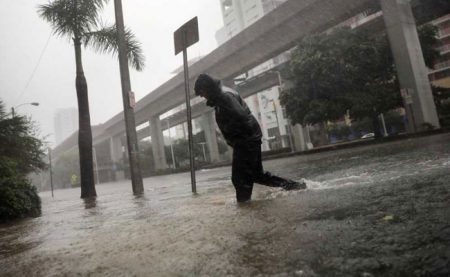September 11, 2017 – Hurricanes Harvey and Irma have hopefully awakened Americans from their slumber about the potential damage to their country from extreme weather exacerbated by changing climate. Notice I didn’t say climate change just in case those of you reading this are overly sensitive to the association of a weather event and the phenomenon we colloquially refer to as global warming.
There are several glaring errors in personal and political judgment evident in what has taken place over the last few weeks on the Texas Gulf Coast and Florida. These two states are governed by those who continue to make bad policy decisions re the environment. And one of those policies is wetland management.
In Texas, Houston has covered over its wetlands with asphalt and concrete, building homes where none should be erected. In Florida, wetlands and mangroves have been steamrolled by both state and local governments oblivious to the consequences.
According to the United States Environmental Protection Agency, coastal wetlands have been disappearing at twice the rate of restoration. The wetlands are both fresh and saltwater. They are more than just mangroves containing a wide range of vegetation. In the United States alone, they cover 1.6 million hectares (40 million acres), about the size of the country of Tunisia in North Africa.
And what do wetlands do?
- Protect shorelines from flooding
- Provide erosion control
- Serve as a habitat for wildlife
- Provide a living for commercial fishers including shellfish
- Improve water quality by acting as filter of chemical pollutants
- Create environments suitable for tourism and recreation, such as boating, recreational fishing, wildlife photography, and hunting
- Sequester carbon in their biomass
So when you cover them over with concrete and asphalt and create 18-hole golf courses from them you are asking for nature’s blowback. Without wetlands, there is nothing to absorb storm surges. And without wetlands, there is nothing to hold the rain from events like Harvey and Irma. Hence you get the flood scenes that have played out on our television screens for more than two weeks.
Without wetlands, there is nothing to absorb storm surges. And without wetlands, there is nothing to hold the rain from events like Harvey and Irma. Hence you get the flood scenes that have played out on our television screens for more than two weeks.
And without wetlands, there is nothing to hold the rain that falls in enormous amounts from extreme weather events like Harvey and Irma. Hence you get the flood scenes that have played out on our television screens for more than two weeks.
Hence you get the flood scenes that have played out on our television screens for more than two weeks and have left tens of thousands homeless.
Wetland mismanagement is bad governance. The lack of state funding, poor local planning, and private real estate development is a deadly combination. Florida over the last six years has made development on wetlands far more important than their preservation. And Houston has made a joke of wetland management. Florida and Houston are not alone. Development of coastal communities within a few feet of the ocean, and the removal of natural wetland barriers so that homes have better ocean views, has taken precedence over planning that takes into consideration the potential of rising sea levels and storm surges.
Development of coastal communities within a few feet of the ocean, and the removal of natural wetland barriers so that homes have better ocean views is common practice in the United States. Developers have no foresight about rising sea levels and storm surges.
There is no place for the water to go when you take away a wetland. The paradise you paved (remember Joni Mitchell’s “Big Yellow Taxi”) becomes hell when the waters rise. Parts of Houston were still under water 11 days after Harvey had passed. Naples, Marco Island, Jacksonville, Miami, and many other communities in Florida experienced what over development and the lack of wetlands yields in the face of extreme weather.
Parts of Houston were still under water 11 days after Harvey had passed. Naples, Marco Island, Jacksonville, Miami, and many other communities in Florida experienced what over development and the lack of wetlands yields in the face of extreme weather.
Naples, Marco Island, Jacksonville, Miami, and many other communities along Florida’s coast have experienced the same with Irma.
Ask Florida’s governor about funding for wetlands. What’s his record? Over $700 million has been cut from water management budgets since he took office in 2011. I’m sure the citizens of Florida, if they are paying attention, will have a new appreciation for his governing skills.









